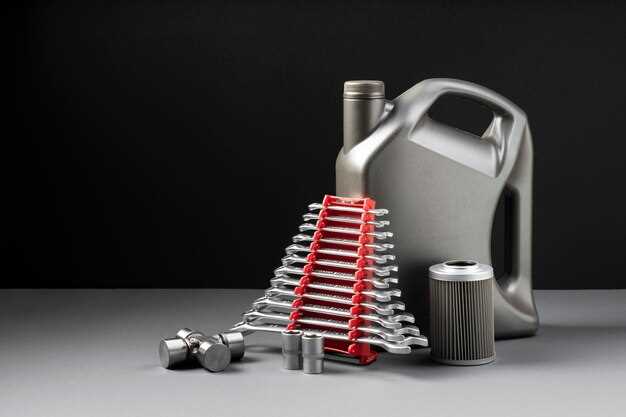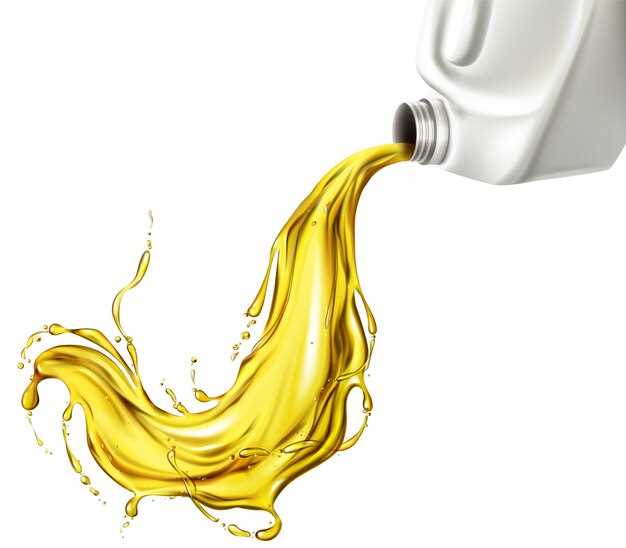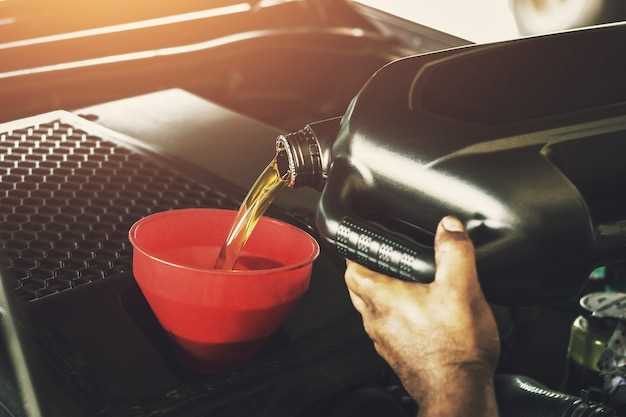
When it comes to optimizing the performance of your high-performance Corrado builds, one critical aspect that often gets overlooked is the choice of brake fluid. The braking system plays a vital role in ensuring your vehicle can handle the increased speeds and enhanced dynamics associated with performance driving. Selecting the right fluid can significantly affect your vehicle’s handling, responsiveness, and overall safety.
High-performance driving generates immense heat, which can lead to brake fade if the brake fluid cannot withstand elevated temperatures. Thus, it is crucial to choose a brake fluid that provides exceptional thermal stability and a high boiling point. This ensures consistent performance even under demanding conditions, such as track days or spirited driving on winding roads.
Furthermore, the viscosity and compatibility of the fluid with your braking components, such as calipers and master cylinders, must also be considered. Using an inferior or incompatible formula can lead to reduced braking efficiency, increased wear, and even catastrophic failure. In this article, we will explore the best options available in the market tailored specifically for high-performance Corrado builds, ensuring you make an informed decision for your next project.
Understanding Brake Fluid Types for Performance Applications
When it comes to high-performance vehicles like the Corrado, selecting the right brake fluid is critical for optimizing braking performance and ensuring safety. Brake fluid serves as the hydraulic medium that transfers force from the brake pedal to the brake components. Understanding the different types of brake fluid available is essential for achieving peak performance.
There are two primary classifications of brake fluid: DOT (Department of Transportation) ratings and the chemical composition. The most common types found in performance applications are DOT 3, DOT 4, DOT 5, and DOT 5.1.
DOT 3 and DOT 4 are glycol-based fluids that are highly effective in most performance applications. They offer good wet and dry boiling points, with DOT 4 being the better option due to its higher dry boiling point, which allows it to withstand more heat during intense driving conditions. This attribute reduces the risk of vapor lock, which can occur when the fluid boils and gas bubbles form, leading to diminished braking performance.
DOT 5, on the other hand, is silicone-based and is not compatible with glycol fluids. While it has a higher boiling point and excellent moisture resistance, its compressibility can negatively affect pedal feel and response, making it less suitable for performance applications. Performance enthusiasts typically avoid it unless there are specific reasons for its use.
DOT 5.1 is a glycol-based fluid with properties similar to DOT 4 but with even higher boiling points. It is specifically formulated to meet the needs of high-performance and racing applications, offering improved pedal feel and a lower risk of fluid breakdown under extreme conditions.
In conclusion, when selecting brake fluid for high-performance Corrado builds, focus on either DOT 4 or DOT 5.1. Both provide the necessary performance characteristics to enhance braking efficiency, reduce fading, and ensure reliable performance under stress. Always check compatibility with the vehicle’s existing brake components and prioritize the fluid that best suits your driving style and conditions.
Key Properties of Brake Fluid: What to Look For
When selecting brake fluid for high-performance Corrado builds, it is essential to understand the critical properties that influence brake performance and safety. Here are the key factors to consider:
| Property | Description | Importance |
|---|---|---|
| Boiling Point | The temperature at which brake fluid begins to vaporize. | A higher boiling point prevents brake fade under extreme conditions, ensuring reliable brake performance. |
| Viscosity | The fluid’s thickness, affecting how easily it flows. | Optimal viscosity ensures timely brake response and efficient pressure transmission in the braking system. |
| Compatibility | How well the fluid works with brake system materials, such as rubber seals and anodized components. | Compatibility prevents premature wear and failure of brake system parts, maintaining overall integrity. |
| Water Absorption | The fluid’s ability to absorb moisture over time. | Low water absorption ensures consistent performance and longevity, reducing the risk of corrosion and brake fade. |
| Certification | Compliance with industry standards such as DOT (Department of Transportation). | Using certified fluids guarantees adherence to performance and safety regulations, ensuring reliable braking. |
Choosing the right brake fluid with these key properties will enhance the braking performance of high-performance Corrado builds, providing confidence and safety on the road or track.
Top Recommended Brake Fluids for Corrado Modifications
When modifying your Volkswagen Corrado for high-performance driving, selecting the right brake fluid is crucial. High-performance builds require fluids that can withstand extreme temperatures and pressures without compromising braking efficiency. Here are some top recommended brake fluids to consider for your Corrado modifications:
-
Motul RBF 600:
This racing-grade brake fluid is known for its high boiling point (around 312°C), making it ideal for high-performance applications. It offers excellent resistance to moisture absorption, ensuring consistent brake performance under demanding conditions.
-
Castrol SRF:
Castrol SRF excels in both dry and wet boiling points, making it a favorite among performance enthusiasts. With a dry boiling point of 320°C, it reduces the risk of brake fade during intense driving, providing reliable braking performance.
-
AP Racing Brake Fluid:
Designed for motorsport applications, AP Racing Brake Fluid features a high boiling point and minimal compressibility. This fluid is engineered to maintain performance even during extreme conditions, ensuring responsive braking throughout your drives.
-
Motul RBF 660:
Offering a higher boiling point compared to standard fluids, Motul RBF 660 is a popular option for enthusiasts pushing their Corrado to the limits. It provides excellent performance under high stress and helps maintain pedal feel during aggressive driving.
-
Wilwood Hi-Temp 570:
Wilwood’s Hi-Temp 570 brake fluid is designed for exceptional performance in racing applications. With a dry boiling point of 570°F, it operates well under high temperatures, providing consistent and reliable braking for modified Corrados.
When selecting brake fluid for your high-performance Corrado, consider factors such as boiling point, moisture absorption, and compatibility with your braking system. Ensure you regularly check and replace the fluid to maintain optimal performance.
How to Properly Test Brake Fluid for High-Performance Use
Testing brake fluid is crucial for ensuring optimal performance in high-performance Corrado builds. Start by checking the fluid’s moisture content, as brake fluid is hygroscopic and absorbs moisture over time. This can greatly reduce brake performance. Use a moisture content tester or a refractometer designed for brake fluids. A reading of over 3% water content indicates that the fluid should be replaced.
Next, assess the fluid’s boiling point. High-performance driving generates a lot of heat, which can lead to brake fade if the fluid boils. Use a brake fluid tester that can measure both dry and wet boiling points. Ensure that the dry boiling point meets or exceeds manufacturer specifications for high-performance use.
Another important factor is the fluid’s viscosity. High-performance brake fluids often need to maintain proper viscosity under varying temperatures. Check the fluid’s specifications to determine if it maintains adequate performance levels at high temperatures.
Periodic visual inspection is also essential. Look for signs of contamination, such as discoloration or particulates. Clear, clean fluid is a sign of good condition, while cloudy or dirty fluid can indicate breakdown or contamination.
Lastly, ensure that the fluid is compatible with the brake system materials, especially when upgrading components. Compatibility issues can lead to fluid breakdown or damage to seals and hoses, which may compromise braking performance.
Common Mistakes When Selecting Brake Fluid for Performance Builds

Choosing the right brake fluid for performance builds like the Corrado is crucial for ensuring optimal braking efficiency. One common mistake is overlooking the boiling point of the fluid. High-performance applications generate significant heat, and using fluid with a low boiling point can lead to vapor lock, resulting in a loss of braking power.
Another mistake is ignoring compatibility with the braking system’s materials. Some brake fluids can degrade rubber seals and components, leading to leaks and system failure. It’s essential to choose a fluid that is compatible with the materials of your specific brake system to maintain integrity and performance.
Failing to consider the fluid’s hygroscopic nature is also a frequent error. Most brake fluids absorb moisture over time, which can lower the boiling point and reduce braking performance. Regularly flushing and replacing the fluid ensures optimal performance and safety.
Finally, many enthusiasts neglect to consult manufacturer recommendations. Each high-performance build may have specific requirements based on its components and intended use. Ignoring these guidelines can compromise performance and lead to costly repairs in the long run.
Maintenance Tips for Optimal Brake Fluid Performance

To ensure your high-performance Corrado brakes operate efficiently, regular maintenance of the brake fluid is essential. Start by checking the fluid level in the master cylinder reservoir frequently. Optimal levels are crucial as low fluid levels can lead to brake fade and decrease the overall effectiveness of the braking system.
Next, monitor the condition of the brake fluid. Brake fluids can absorb moisture over time, which can reduce their boiling point and lead to vapor lock during high-performance situations. It is advisable to perform a moisture content test or replace the fluid at regular intervals, typically every two years, to maintain performance.
Additionally, always use the recommended brake fluid type for your specific build. High-performance vehicles, like the Corrado, may require specific fluid grades such as DOT 4 or DOT 5.1. Using the correct fluid ensures compatibility with your braking components while providing optimal heat resistance.
Another essential maintenance tip is to periodically bleed your brake system. This process removes trapped air bubbles that can compromise brake feel and performance. Bleeding should be done when changing the fluid or if there is a noticeable decrease in brake effectiveness.
Finally, inspect the brake lines and fittings for any signs of wear or leakage. Any damage to these components can lead to fluid loss and reduced brake pressure, which can severely impact performance. Ensuring these parts are in good condition will help maintain the integrity of the brake system.













